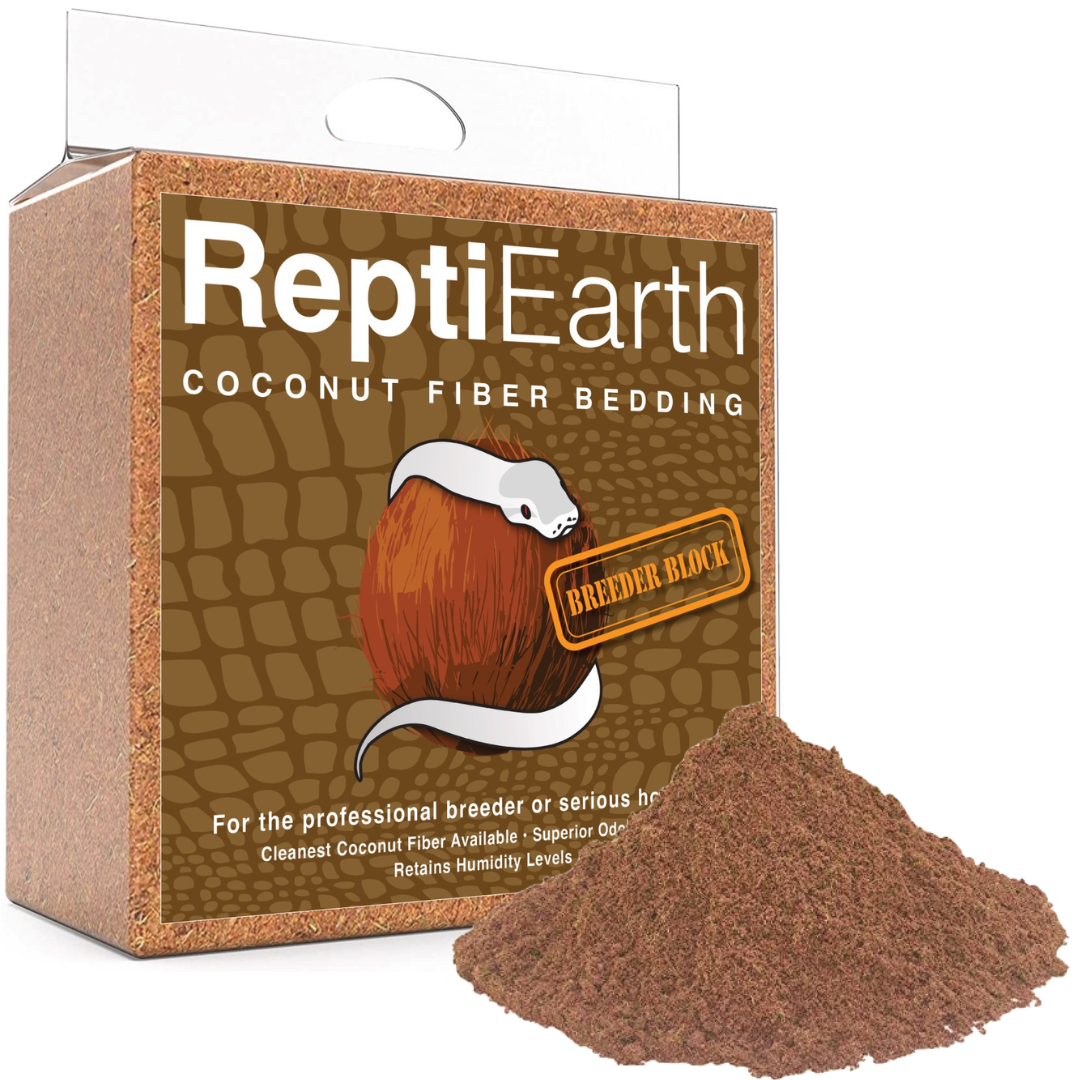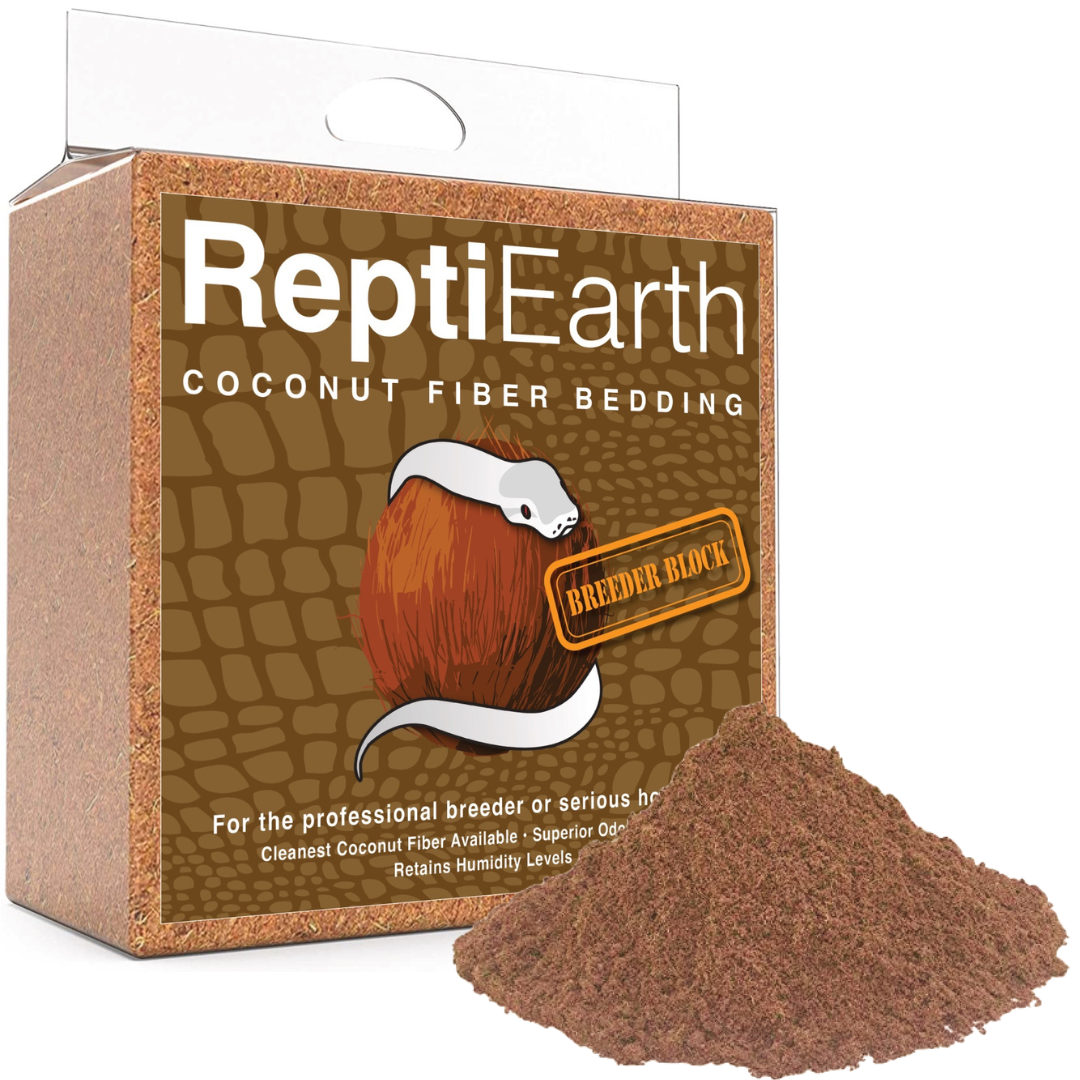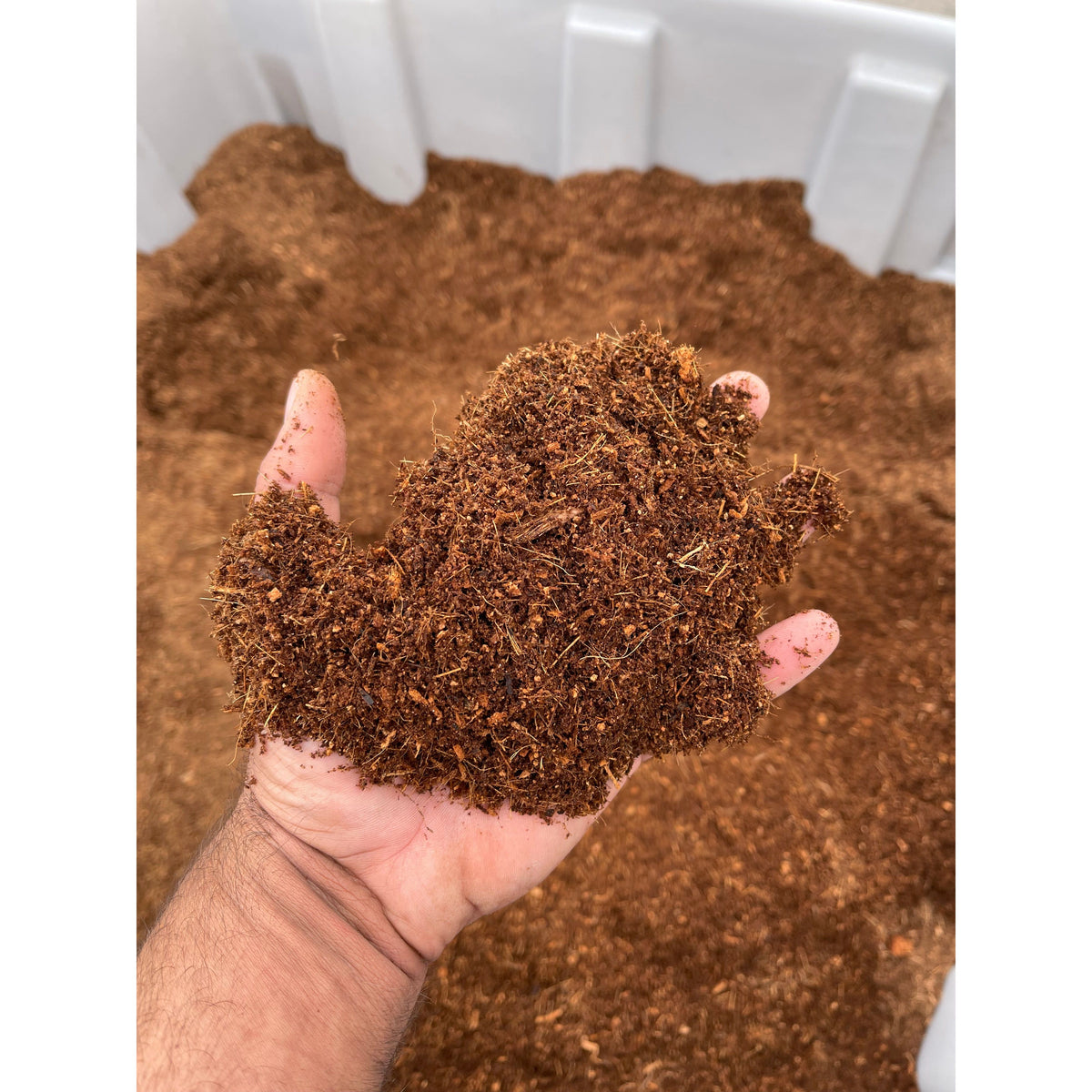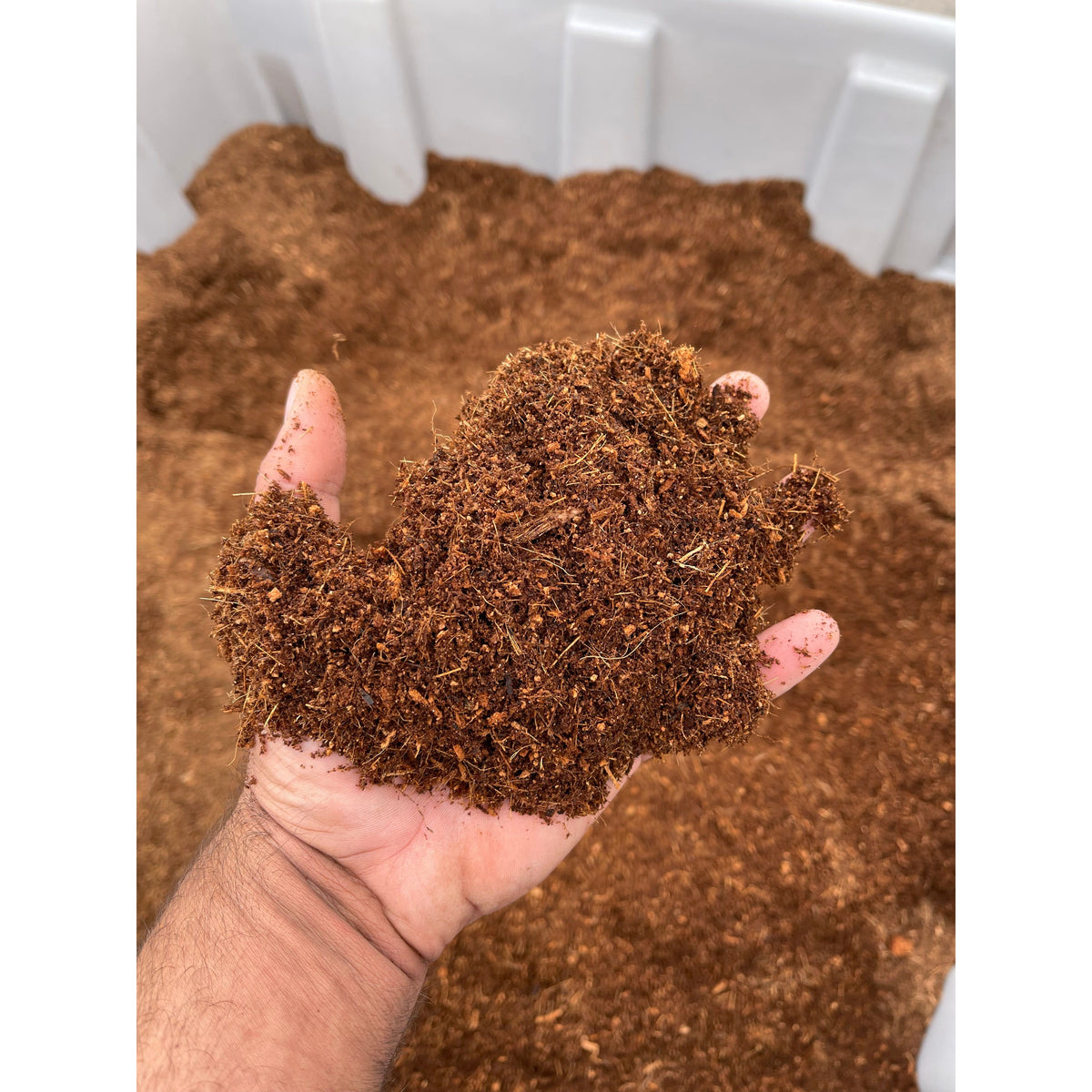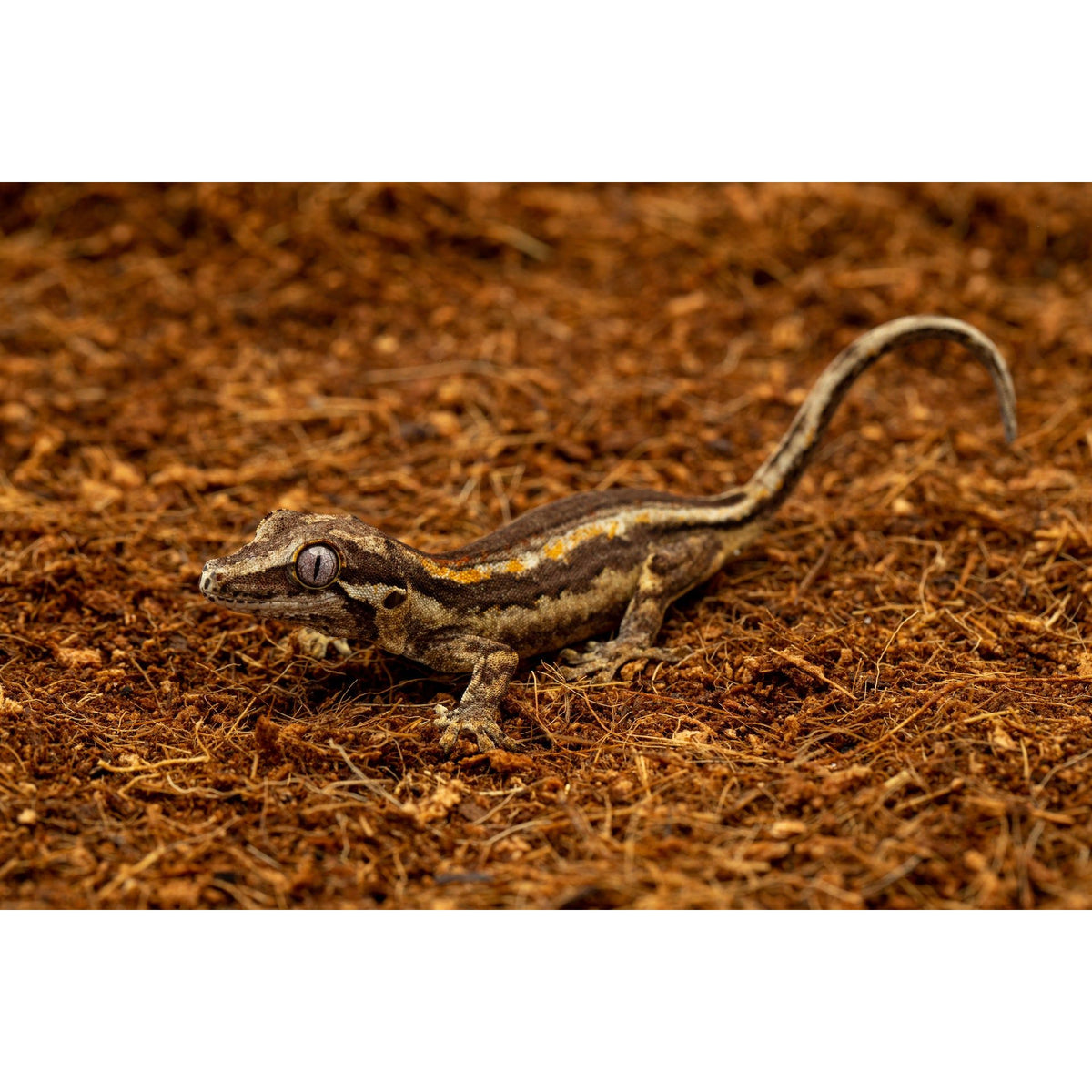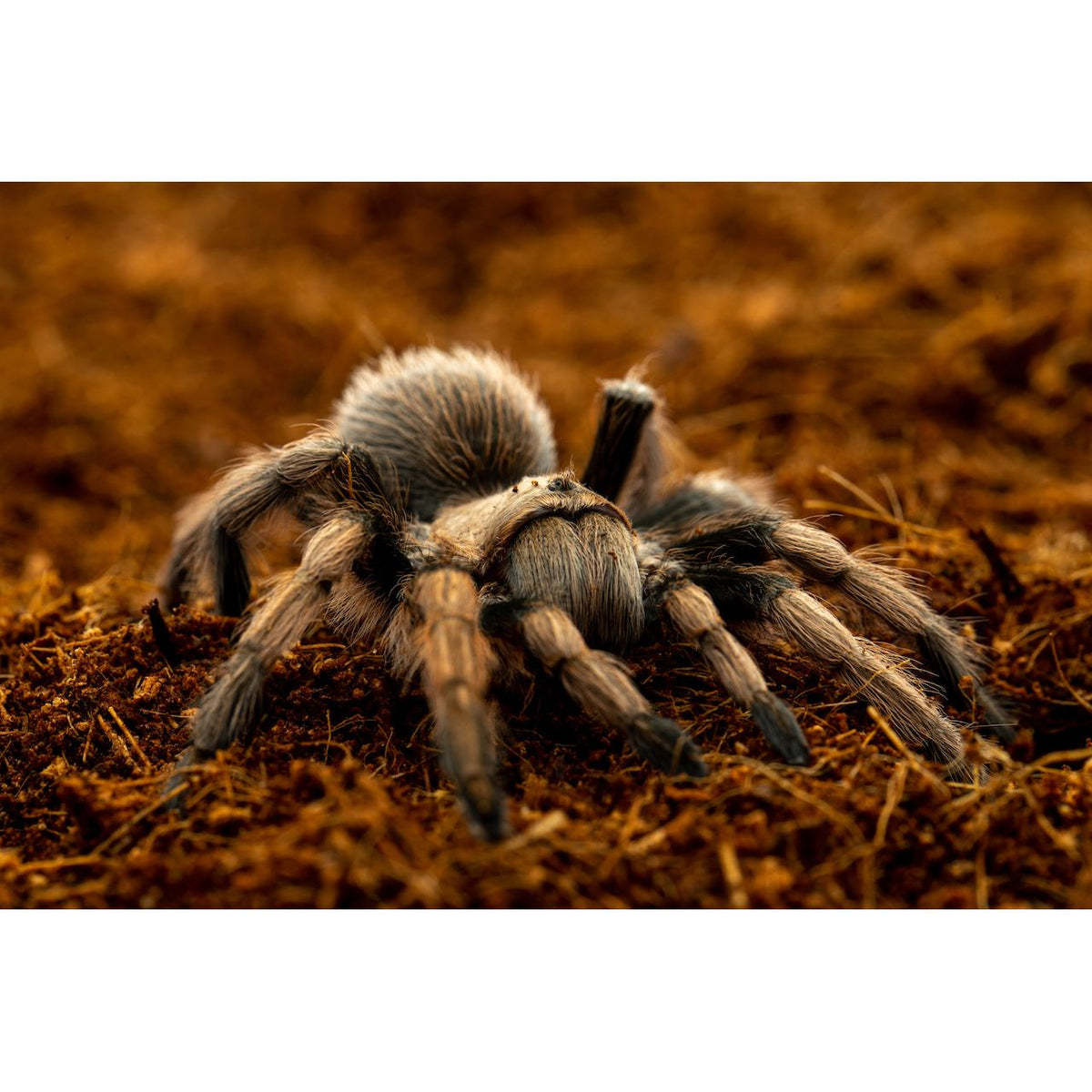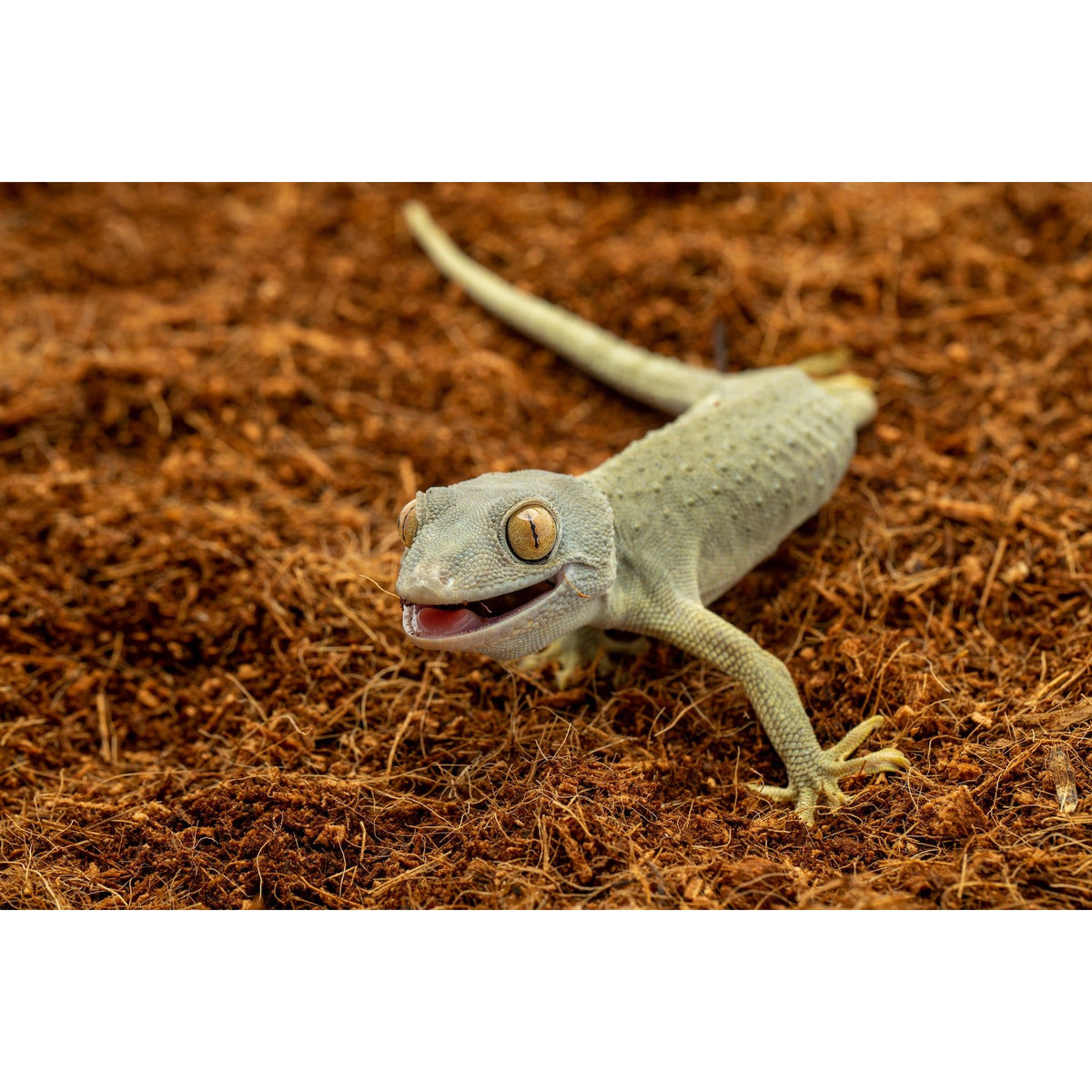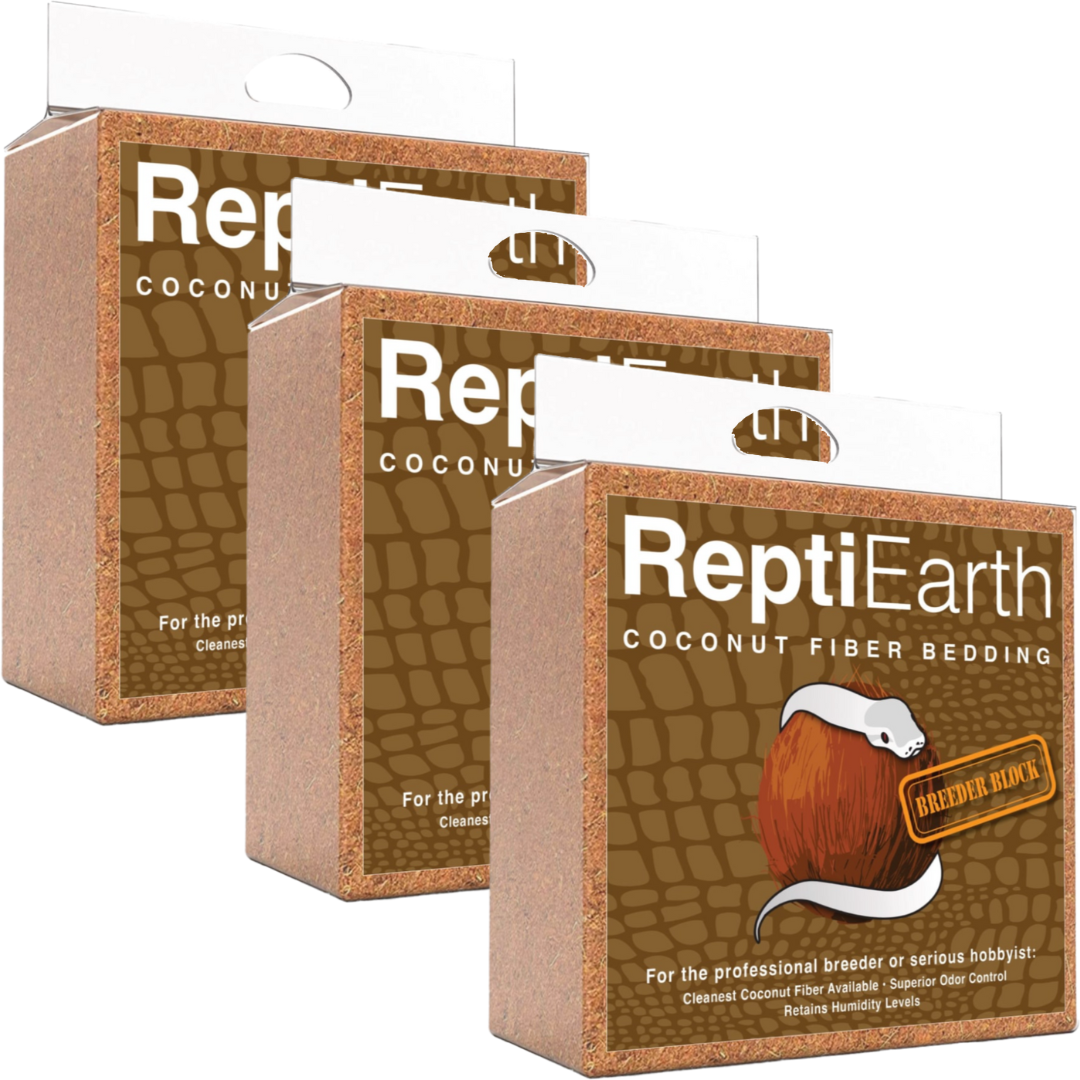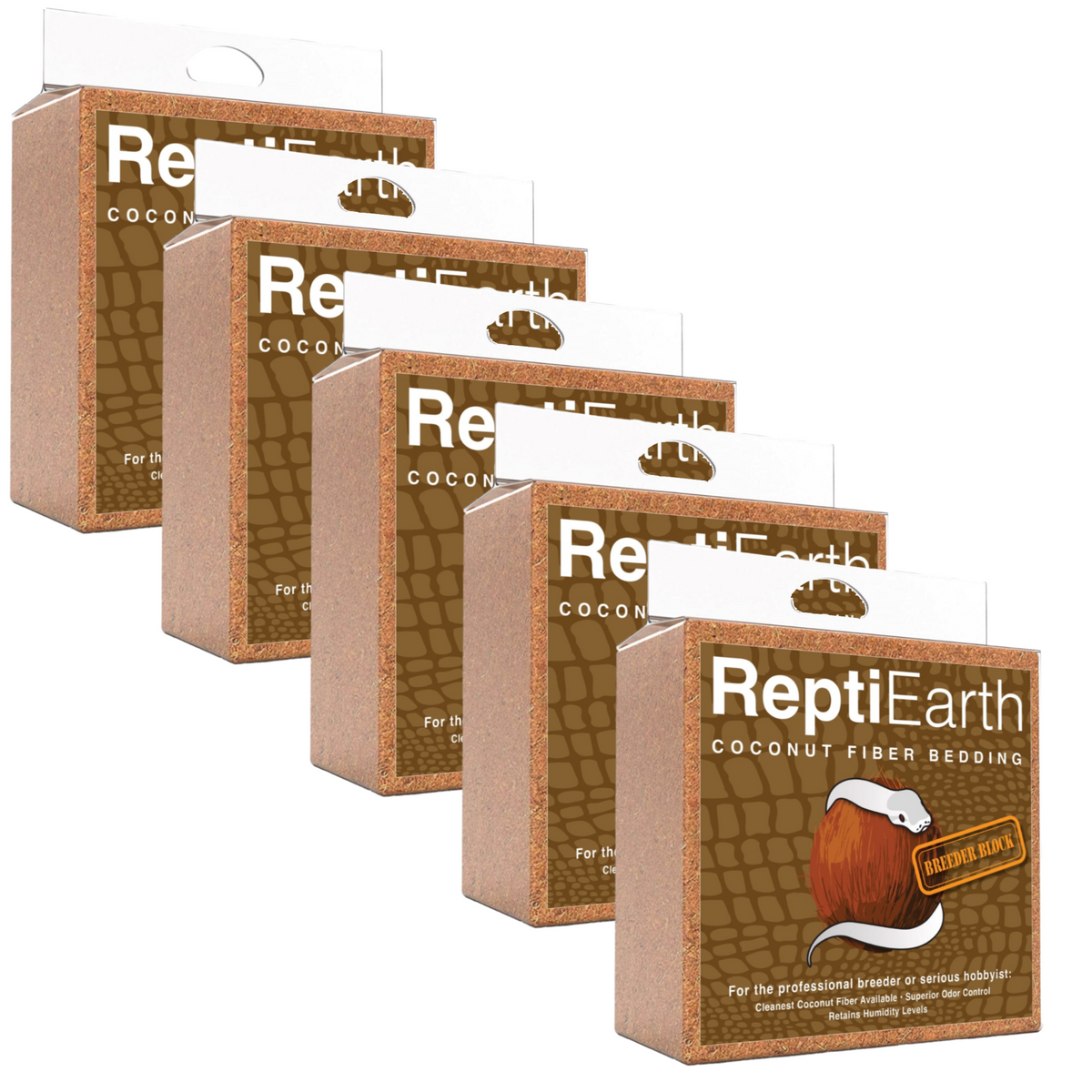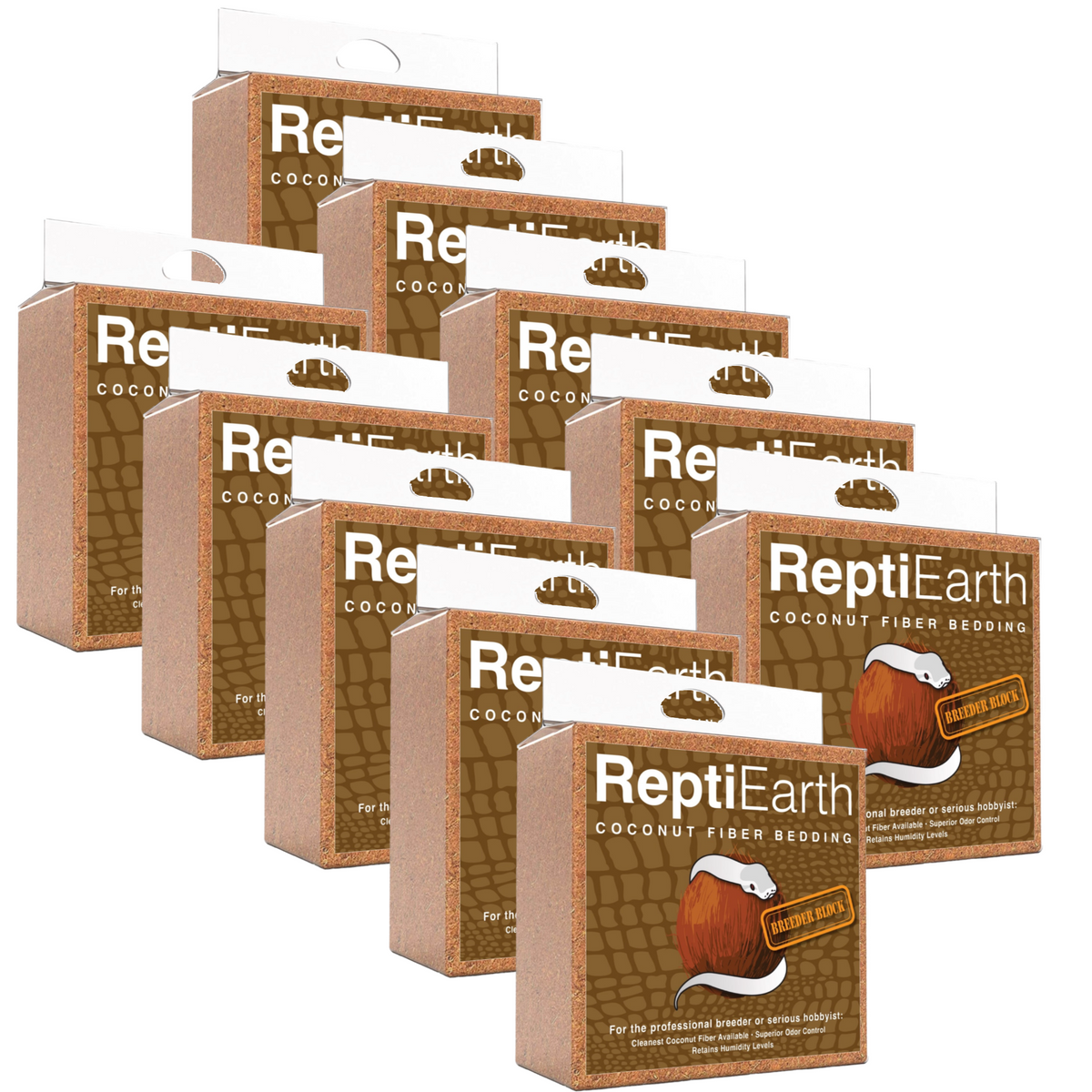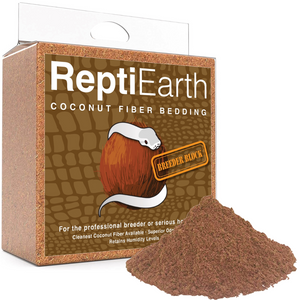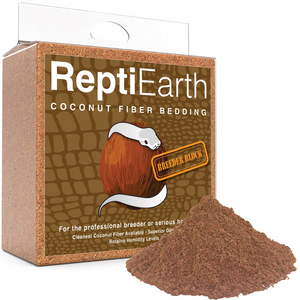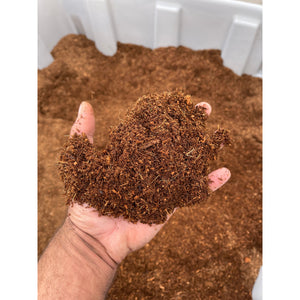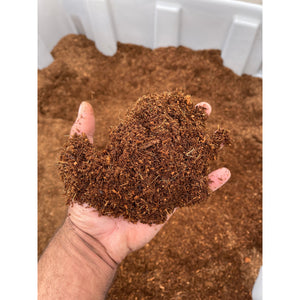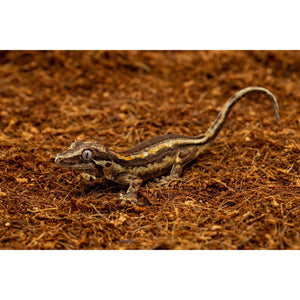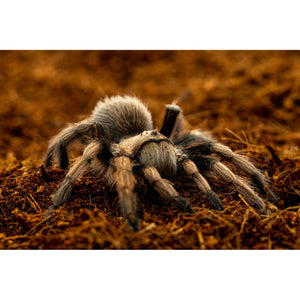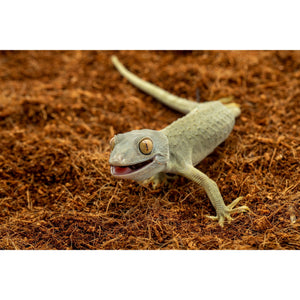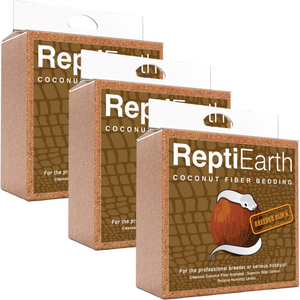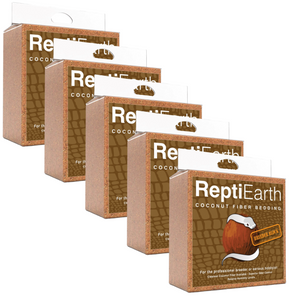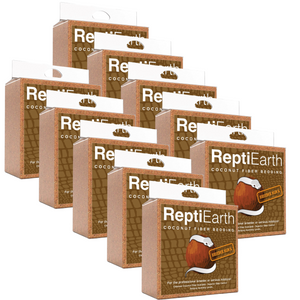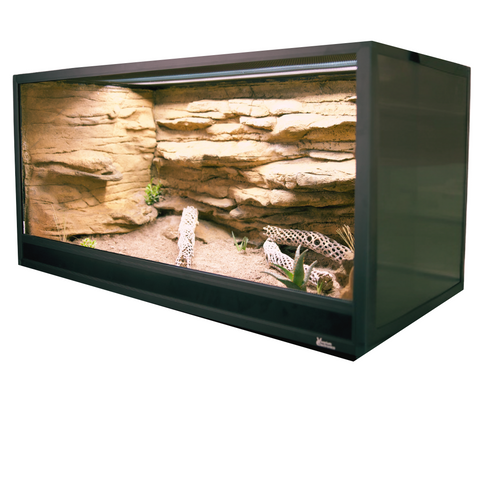Natural History
The red-footed tortoise is a medium-sized, terrestrial turtle native to the forest edges, savannas, and dry grasslands of northern South America, with ranges extending into parts of Central America and some Caribbean islands. This tropical species is adapted for a life on land, thriving in warm, humid environments where vegetation is abundant. Its name refers to the reddish or orange scales found on its limbs and head, though color variation can occur among regional populations.
The life cycle of the red-footed tortoise begins with eggs, which are laid in shallow burrows dug by the female, typically during the wet season. A clutch may contain between 5 to 15 eggs, though larger females have been known to produce even more. Incubation lasts anywhere from 90 to 150 days, depending heavily on environmental conditions, particularly temperature and humidity. Hatchlings emerge at 1.5 to 2 inches in length and are fully independent from birth, receiving no care from the parents. Growth is relatively slow, and it can take several years for juveniles to reach sexual maturity—typically around 5 to 10 years of age. Adults measure between 12 and 16 inches in length, though some exceptionally large individuals may reach up to 20 inches. The average lifespan in the wild is estimated at 30 to 50 years, though captive individuals in proper care can live well beyond that, sometimes into their 60s or 70s.
Behaviorally, red-footed tortoises are diurnal, being most active during cooler parts of the day such as early morning and late afternoon. In the wild, they exhibit a semi-nomadic lifestyle, ranging across their territory in search of food. They are solitary by nature, though aggregations may be seen around food sources or during the breeding season. When two males encounter each other, dominance displays such as head bobbing, shell butting, or attempting to flip the opponent are common. Courtship consists of visual and auditory signaling, including head movements and guttural vocalizations.
Feeding behavior is omnivorous and opportunistic. While the bulk of the red-foot’s diet is composed of plant matter—fruits, leaves, flowers, and fungi—they will also eat insects, invertebrates, carrion, and even feces, which provides additional nutrients. Their ability to consume a wide range of foods reflects their adaptability to different habitats with varying resource availability. They rely heavily on their strong sense of smell and good vision to locate food. When threatened, red-footed tortoises withdraw into their shells and will sometimes hiss or stomp, though they do not possess more active forms of defense.
In their native ecology, red-footed tortoises play a key role as both consumers and seed dispersers. By feeding on fruits and defecating the seeds some distance away, they help promote plant diversity and regeneration in forest environments. This makes them essential contributors to tropical ecosystem maintenance. They are mid-level foragers in the food chain, preying upon small invertebrates and decaying organic matter while serving as prey for animals such as jaguars, large birds, and humans. Their tough, domed shells provide significant defense from many predators, though younger tortoises remain vulnerable until they gain size and strength.
Environmental adaptations such as their dark, sometimes speckled carapace help them blend with the leaf litter of the forest floor, providing camouflage. Their ability to endure periodic periods of dryness by retreating to shaded or moist microhabitats—such as under logs or in burrows—allows them to survive outside dense forest in more arid savanna zones. These adaptations, combined with their broad diet and slow metabolism, have allowed the red-footed tortoise to persist across a variety of landscapes despite changes in land use and climate. Understanding these natural behaviors and ecological roles is essential for providing proper care and management in captivity, as it ensures that their instinctual needs are met in a human-controlled environment.
Conservation Status
The Red-footed Tortoise is not currently assessed by the IUCN Red List of Threatened Species, meaning it does not yet have an official global conservation status. Despite this, the species faces a range of pressures in the wild that raise concern among conservationists and researchers.
Red-footed Tortoises are widely distributed throughout much of northern South America as well as parts of the Caribbean. While their geographic range is broad, wild populations show signs of localized decline, habitat fragmentation, and ongoing human-related threats.
One of the most significant challenges is habitat loss, primarily from deforestation and agricultural expansion. Large areas of tropical forest are cleared for cattle ranching, soy farming, and other industrial uses, reducing the tortoise’s natural shelter, foraging grounds, and breeding areas. Because Red-footed Tortoises are terrestrial and relatively slow-moving, they cannot easily adapt to rapid environmental change or migrate to new areas, leaving them especially vulnerable.
In addition to habitat pressures, poaching and illegal collection for the pet trade continue to be major threats. Despite legal protections in some parts of their range and their listing in CITES Appendix II (which regulates international trade), Red-footed Tortoises are still captured and sold locally and internationally. Hatchlings and juveniles are particularly targeted, disrupting population structure and long-term reproductive health. Road mortality, predation by feral animals, and hunting for meat in certain regions further add to population pressures.
Conservation actions are already in place to help safeguard the species. Protected areas and reserves across South America provide safe havens, while breeding programs both in native countries and internationally contribute to maintaining healthy genetic stock. Captive breeding also helps meet demand in the pet trade, reducing pressure on wild populations. Additionally, habitat restoration projects in the Amazon and surrounding ecosystems aim to rebuild corridors and critical ranges.
Although the Red-footed Tortoise currently lacks an IUCN Red List assessment, evidence of localized declines and persistent threats highlights the need for continued monitoring and conservation. Strengthening enforcement of wildlife trade regulations, expanding protected habitats, and promoting responsible captive care will all be key in ensuring the long-term survival of this charismatic tropical tortoise.
Native Range
The red-footed tortoise is native to South America and has a moderately wide distribution across the northern and central parts of the continent. Its range extends through countries such as Venezuela, Colombia, Guyana, Suriname, French Guiana, Brazil (particularly the Amazon Basin region), Ecuador, Bolivia, and parts of Paraguay. Populations have also been introduced to certain Caribbean islands, though these are not considered part of the species' native range. Within this geographical distribution, the tortoise predominantly inhabits tropical and subtropical forested environments, but it can also be found in drier savanna regions and transitional zones that bridge rainforest and grassland habitats.
In terms of macrohabitat, red-footed tortoises are primarily associated with humid lowland forests, including Amazonian rainforest, secondary forest, and scattered woodland savannas. These ecosystems are defined by dense vegetation, stable moisture levels, and a high degree of biodiversity. Transitional forest edges and open canopy areas are also important macrohabitat types, offering access to both shelter and foraging resources. The tortoises are known to use well-vegetated forest floors where leaf litter, fallen logs, and dense underbrush provide concealment and humidity.
On a microhabitat level, red-footed tortoises favor locations with shaded ground cover and high humidity. They often shelter under leaf piles, inside hollow logs, beneath dense thickets, and in natural depressions in the forest floor. These microhabitats provide critical thermoregulatory and moisture-retentive microclimates, as the tortoises lack the behavioral tolerance needed for prolonged exposure to direct sunlight and arid conditions. During the hottest parts of the day, they will retreat to these shaded, insulated areas to maintain optimal body temperature and water balance.
Climatic conditions within their natural range are typically warm and humid. Average daily temperatures in their habitat generally range from 75°F to 90°F, with limited seasonal variation in temperature due to the equatorial latitude. Relative humidity in these areas remains high year-round, often between 70% and 90%. Annual precipitation typically exceeds 70 inches, with a defined wet season and a slightly drier period, during which feeding behavior and reproductive activity may change. Seasonal fruiting of trees and vegetation cues important foraging and breeding behaviors in wild tortoises.
Red-footed tortoises are generally found at low elevations, typically from sea level up to around 2,000 feet. Their preference for low-lying forested and savanna zones aligns with the thermal and humidity thresholds necessary for proper physiological function, including digestion, hydration, and shell development. These areas also provide access to key environmental resources, such as ephemeral pools, natural salt licks, and an abundant variety of edible plant materials.
Essential environmental factors for survival include access to clean, stable water sources for drinking and maintaining hydration; a diverse array of fruiting plants and broad-leaved vegetation for dietary needs; and substrate types that support natural movement and resting behavior. Soils in their habitat are generally soft and loamy, aiding in digging shallow depressions for rest and thermoregulation. Additionally, a semi-closed forest canopy is important for maintaining consistent leaf litter and humidity at the ground level, with occasional sunlit gaps allowing for limited basking as needed for metabolic regulation.
Behavior
Red-footed tortoises exhibit primarily diurnal activity patterns, meaning they are most active during daylight hours. In their native tropical habitats of South America and surrounding islands, activity peaks during the early morning and later afternoon, often avoiding the hottest part of the day. This behavior helps them regulate body temperature by alternating between sunning and retreating to shaded, humid microhabitats. Seasonal changes significantly influence their activity levels. During the dry season, wild individuals may decrease activity, especially during extreme heat or drought conditions. In captivity, similar changes in activity can be observed if the enclosure's temperature or humidity levels drop below their preferred range. Although they do not undergo true brumation like temperate zone reptiles, minor decreases in activity and appetite can occur in cooler months, particularly when exposed to reduced photoperiods or ambient temperatures below 70°F.
Socially, red-footed tortoises are largely solitary but are considered semi-social compared to many other tortoise species. While they do not form complex group structures, they will tolerate the presence of conspecifics, particularly at feeding or basking sites. In some wild populations, loose aggregations have been observed, although these tend to be temporary and resource-driven rather than indicative of long-term social bonding. Males can exhibit mild territorial behavior, especially during the breeding season, which typically coincides with the onset of the rainy season in their native range. During this time, dominance behaviors such as head bobbing, ramming, and mounting attempts are seen, especially when multiple males compete for access to females. Mating involves a brief courtship of shell ramming and vocalization—low grunting sounds that accompany copulatory attempts. Red-footed tortoises do not demonstrate parental care beyond egg-laying. Females excavate shallow nesting burrows and may lay multiple clutches per season, but their involvement ends after oviposition.
In terms of environmental responsiveness, red-footed tortoises are highly sensitive to temperature, humidity, and light cycles. Optimal activity occurs between 75°F and 85°F, while prolonged exposure to temperatures below 65°F or above 95°F can induce stress and lead to health complications. They seek sunlit patches for basking and use shaded, humid retreats when conditions become too dry or hot, displaying clear thermoregulatory behavior. Hydration and humidity play important roles in their health; in the wild, they often drink from puddles and wallow in mud to maintain hydration and cool down. When humidity levels fall below 60%, individuals may become lethargic and prone to shell imperfections or respiratory issues. Red-footed tortoises rely heavily on chemical cues to detect food, mates, and competitors. Their sense of smell is well developed and plays a key role in identifying ripe fruits, fungi, and carrion. Response to predators includes withdrawal into the shell, hissing, and under rare circumstances, defecation or cloacal discharge as a deterrent. They may also freeze when startled, relying on camouflage from their dark, speckled shells to avoid detection.
One of the most unique behavioral traits of the red-footed tortoise involves its feeding habits. Unlike many strict herbivorous tortoises, this species is omnivorous and exhibits opportunistic foraging behavior. In the wild, they consume a diverse diet including fruits, leaves, mushrooms, flowers, and invertebrates, and they are known to consume carrion. This dietary flexibility is largely facilitated by their keen olfactory sensitivity and a tolerance for fermentation products in overripe or decomposing plant matter. Another notable trait is their locomotion. While generally slow-moving, they can move with surprising speed when motivated, particularly when pursuing food or engaging in mating behaviors. Some individuals display exploratory behaviors such as pacing or climbing over low obstacles, reflecting both foraging instincts and responsiveness to environmental complexity.
In captivity, behavior can shift significantly due to the controlled and often limited environment. Activity patterns often align with artificial lighting schedules, and without natural seasonal cues, some individuals may enter erratic rest cycles or display reduced activity. Feeding behavior tends to become less selective, as keepers often provide readily accessible food, reducing the need for foraging or exploratory behaviors. Aggression among males may become more pronounced in confined spaces lacking visual barriers, and mounting behavior may be misdirected toward other tortoises indiscriminately. Enrichment such as varied terrain, hide boxes, and rotating food locations helps encourage more natural behaviors. Captive tortoises kept in environments with poor humidity control may exhibit pyramiding—a shell deformity linked to suboptimal moisture and diet—along with behavioral signs of stress such as hiding excessively or becoming overly withdrawn. Conversely, those kept in large, well-maintained enclosures with appropriate UV lighting, humidity, and environmental diversity often display behaviors closely resembling those observed in the wild.
Captivity Requirements
Enclosure Design
Red-footed tortoises require spacious and secure enclosures that accommodate their active, terrestrial behavior. For juveniles, a minimum enclosure size of 3 feet by 1.5 feet with at least 1.5 feet of wall height is recommended. However, as these tortoises grow, larger enclosures become necessary. Adult red-footed tortoises, which average 12 to 16 inches in length but can exceed 18 inches, need a minimum floor space of 6 feet by 4 feet, though larger is always better. Outdoor enclosures are ideal in warm climates but must be escape-proof and predator-resistant. For indoor housing, pvc or custom-built wooden enclosures with sealed interiors are preferred because they retain heat and humidity more effectively than glass terrariums.
Enclosure material should be non-toxic, moisture resistant, and well-insulated. Sealed plywood or melamine-coated wood makes a strong and durable option, while high-density plastic enclosures can also be used, provided they include ample ventilation. Ensure the enclosure has a secure lid or walls that prevent climbing and escaping. Ventilation is critical, particularly in indoor setups, to avoid stagnant air that can promote respiratory infections. Effective designs maintain good cross-ventilation while still preserving humidity and heat.
The layout of the enclosure should include varied microclimates and terrain to reflect the tortoise’s natural forest-edge habitats. Provide at least two hides, one on the cooler side and one near the basking zone, using naturalistic materials like cork bark, wood crates, or moss-lined domes. Incorporate low platforms, sturdy logs, and natural foliage-safe plants to encourage physical exploration. Gentle elevation changes and textured surfaces help maintain strong limbs and shells. Basking and shade areas must be easy to access. All fixtures should be stable, as tortoises can flip over if they attempt to climb unstable objects.
Secure the enclosure by ensuring all openings can be locked or latched, and never underestimate a tortoise’s ability to push through loose gates, climb mesh corners, or dig under barriers. Buried edging at least 8 inches deep can prevent digging escapes in outdoor pens. Surveillance or regular monitoring is highly advised during outdoor housing periods in predator-accessible areas.
Lighting and Heating
Red-footed tortoises come from tropical climates and require a combination of heat and ultraviolet (UVB) lighting to stay healthy and metabolize calcium correctly. A reliable UVB source is essential to prevent metabolic bone disease and support proper shell growth. Use a linear 10-12% UVB fluorescent bulb placed 12 to 18 inches above the tortoise's natural basking area, ensuring the bulb is housed in a reflective hood and is not obstructed by glass or plastic, which blocks UVB rays. UVB bulbs must be replaced every 6 to 12 months according to manufacturer recommendations, even if they appear to still emit light.
A temperature gradient should be maintained throughout the enclosure, allowing the tortoise to regulate its body temperature. The basking area should maintain temperatures between 90 and 95°F during the day. The ambient temperature across the rest of the enclosure should be kept between 75 and 85°F. At night, temperatures can drop no lower than 70°F. If night temperatures fall below that, a ceramic heat emitter or radiant heat panel should be installed, controlled by a dependable thermostat to ensure that nighttime temperatures do not become too cool.
Never use heat rocks, as they present serious burn risks and do not provide the type of distributed warmth these tortoises require. Instead, use radiant heat sources mounted overhead or on enclosure walls, always regulated by a thermostat. Full-spectrum lighting that mimics natural daylight cycles is also beneficial and can be achieved by syncing lights to a 12-hour on/off photoperiod. Seasonal adjustments may be made in captivity, though red-footed tortoises do not generally brumate. Allowing for subtle seasonal changes in light and temperature can promote natural rhythms, but care must be taken to avoid sudden or dramatic changes that could cause stress.
Substrate and Enrichment
Red-footed tortoises thrive best on substrates that hold humidity without becoming soggy and that simulate the leaf-littered floor of their native tropical forests. A deep substrate layer—at least 4 to 6 inches for juveniles and 6 to 8 inches for adults—encourages natural digging and provides a stable environment. A highly recommended choice is a blend of ReptiChip with ReptiEarth, a fine, loose substrate that adds structure and moisture-retention to the mix. This combination minimizes impaction risks while supporting humidity needs.
Avoid substrates like sand, calci-sand, or crushed walnut, which are harmful if ingested and can cause respiratory or digestive issues. Never use reptile carpet, as it fails to meet burrowing needs, retains waste, and can cause shell abrasions. Spot clean the substrate regularly and replace it entirely every 8 to 12 weeks, or sooner if odors or excessive moisture become problems.
To promote enrichment, provide a range of activities and interactive items. Scatter food in various locations to encourage foraging. Smooth wooden logs, durable artificial vines, and flat rocks allow tortoises to exercise and strengthen their limbs. Red-footed tortoises often climb over natural obstacles, so include gentle ramps and uneven terrain to stimulate physical activity. Multiple hides with different humidity levels (moist hides and dry hides) mimic their use of microhabitats in the wild and help them regulate their body functions. Rotate enrichment items every few weeks to keep the environment novel and engaging, reducing stress and discouraging inactivity.
Humidity and Hydration
Maintaining adequate humidity is vital for red-footed tortoises, especially juveniles, as improper levels can result in pyramiding of the shell, dehydration, or respiratory issues. Optimal humidity should remain between 70% and 80% throughout the day, with slightly increased humidity at night mimicking tropical forest conditions. Use a high-quality digital hygrometer with remote probes to accurately monitor humidity levels in multiple areas of the enclosure.
To sustain proper humidity, use a layered substrate like the ReptiEarth and ReptiChip mix, which retains moisture well without becoming swampy. Regular misting helps maintain local humidity, especially near moist hides. For dusty climates or dry homes, consider supplementing with a cool-mist ultrasonic fogger, particularly at night, and ensure that the enclosure maintains good ventilation to prevent mold or bacterial overgrowth. Avoid over-saturating the substrate, which can lead to shell rot or respiratory distress.
Red-footed tortoises drink from standing water sources and benefit from a wide, shallow water dish that is cleaned daily and large enough for them to soak in. This species may also derive water from the environment by licking moisture off surfaces following misting, especially juveniles. To mimic natural hydration behaviors, offer occasional lukewarm soaks (about 15–20 minutes) two to three times a week for younger tortoises and at least weekly for adults. Soaking also encourages bowel movements and can help prevent dehydration.
Monitoring hydration is crucial. Tortoises with sunken eyes, wrinkled skin, or dry scutes may be dehydrated. Regular access to water, high-humidity environments, and proper hydration practices are key to maintaining their long-term health. Combine environmental control strategies with daily observations to ensure your red-footed tortoise thrives in captivity.
Diet & Supplementation
In its natural habitat, the red-footed tortoise displays omnivorous feeding habits, with a diet composed of a wide range of plant and animal matter. Native to humid forests and grasslands of South America, this species primarily consumes fallen fruits, fungi, flowers, and broadleaf vegetation. However, opportunistic feeding is common, and they readily consume small invertebrates such as snails, insects, and worms, as well as carrion including dead birds or small mammals when encountered. Their diet in the wild can shift seasonally, depending on what food sources are available. During the wet season, when fruits and flowers are more abundant, their diet leans more heavily toward plant matter. In drier months, they often increase intake of protein sources such as invertebrates or carrion to meet their nutritional needs.
Red-footed tortoises are primarily ground foragers and rely on olfactory cues, or chemical signals, more than visual tracking to locate food. Their keen sense of smell enables them to detect ripe, fallen fruits and decomposing organic material from long distances. They are slow-moving, non-predatory animals, and lack any specialized hunting techniques. Instead, their feeding strategy is based on opportunistic scavenging and browsing. They exhibit selective eating behavior, often choosing the most nutritious and water-rich food items when multiple options are available. This selectivity helps regulate their intake of calcium, phosphorus, and other essential nutrients.
Juveniles tend to consume a higher proportion of animal matter compared to adults, which helps support their rapid growth and increased protein requirements during early development. As they mature, their dietary focus shifts more toward plant material, which aligns with their reduced metabolic demand and slower growth rate. Seasonal changes in ambient temperature and humidity can also influence feeding frequency. During cooler or drier periods, tortoises may eat less often or reduce overall food intake because of slowed metabolism.
In captivity, red-footed tortoises require a balanced diet that closely mirrors their natural omnivorous feeding behavior. A quality captive diet should consist of approximately 60 to 70 percent dark leafy greens and broad-leaved vegetables, including collard greens, dandelion greens, and mustard greens. An additional 15 to 25 percent of the diet can include fruits such as papaya, banana, mango, and melon, offered in moderation due to their high sugar content. The remainder can consist of low-fat animal proteins provided periodically, such as earthworms, snails (cultured without pesticide exposure), boiled eggs, or high-quality tortoise-safe formulated diets. Mushrooms, especially edible species with high fiber and low protein content, may also be included to replicate the fungi portion of their natural diet.
Supplementation in captivity is essential to prevent nutritional deficiencies, particularly related to calcium and vitamin D3. Dusting food with calcium carbonate two to three times per week, along with a multivitamin supplement once per week, supports bone development and shell health. Ultraviolet B (UVB) lighting is critical for synthetic vitamin D3 production and calcium metabolism, especially for indoor-housed individuals. Because captive diets may lack the diversity found in the wild, offering a broad mixture of produce and proteins can help compensate for nutritional gaps. However, caution is required to avoid overfeeding protein or fruit, which can lead to shell deformities, kidney problems, and digestive issues.
Common feeding challenges in captivity include food refusal, often triggered by stress, inappropriate temperatures, or insufficient lighting. Obesity can result from excessive fruit and protein consumption or lack of exercise. Malnutrition typically stems from imbalanced calcium-to-phosphorus ratios or prolonged use of nutritionally poor food items like iceberg lettuce or dog food. To encourage natural feeding behaviors and avoid these issues, caregivers should implement varied feeding schedules with alternating food types and textures. Providing enrichment opportunities, such as scattering food within the enclosure, placing food on elevated surfaces, or hiding morsels under leaf litter, can stimulate natural foraging instincts. Regular weighing and visual health assessments are useful for monitoring dietary effectiveness and making necessary adjustments.
Reproduction
Red-footed tortoises typically reach sexual maturity between 5 to 10 years of age, depending on growth rates influenced by diet and environmental conditions. Males are generally identified by distinct sexual dimorphism. Mature males tend to have a longer, concave plastron, a more pronounced gular scute (used in dominance displays and combat), and a thicker, longer tail. Females usually have flatter plastrons and broader, more rounded shells. Males also tend to be slightly larger and more robust than females. During courtship, males engage in a series of displays that include head bobbing, circling the female, and emitting soft clucking vocalizations to gain attention. If the female is receptive, she may allow mounting to proceed. Males may compete for mating privileges, with the larger or more dominant male often establishing territory or asserting breeding rights through physical nudges or ramming behaviors.
Reproductive activity in red-footed tortoises is closely tied to seasonal environmental cues that signal the onset of their natural breeding period. In their native tropical range, breeding often begins during or just after the onset of the rainy season, when food is plentiful. To replicate this in captivity, keepers should initiate subtle changes in photoperiod by increasing artificial light exposure to simulate a shift toward longer days, increasing humidity levels within the enclosure, and slightly raising nighttime temperatures. Daytime ambient temperatures should be maintained between 80°F to 88°F, with a basking area around 95°F, while nighttime lows can drop to around 75°F. Relative humidity should be elevated to between 70% and 80%, as increased moisture levels often act as a trigger for reproductive behavior. Regular misting and the use of automated humidity systems can help achieve these conditions consistently.
Red-footed tortoises are oviparous, meaning they lay eggs. For successful copulation, it is important to ensure that both animals are healthy, well-fed, and acclimated to each other’s presence. A neutral introduction zone is ideal to assess compatibility. Though not strictly solitary, red-footed tortoises do not require large social groups for breeding and are more effectively bred in male-female pairs or small harems with a single male and 2–3 females, provided the enclosure is spacious enough—ideally at least 6 feet by 4 feet per adult tortoise—to reduce territorial stress. Breeding success is often increased by giving animals access to separate outdoor enclosures during warm months, which permits natural thermoregulation and behavioral stimulation. Nesting females require secure, private nesting areas with access to moist, diggable substrate such as a loamy ReptiEarth-sand mix at least 8 inches deep, where they can lay and bury their clutches.
Several challenges may arise when attempting to breed red-footed tortoises in captivity. One of the most common issues is incompatibility between individuals, which may result in aggression or disinterest. In such cases, temporary separation followed by reintroduction after several weeks in enriched environments may recalibrate animal behavior. Stress is another major factor, often caused by poor husbandry including insufficient space, inadequate nesting options, or unstable temperature and humidity levels. To mitigate stress-induced reproductive failure, maintaining environmental stability, appropriate social groupings, and minimal human disturbance during breeding periods is essential. Additionally, improper diet can impair fertility; feeding a varied, high-fiber, calcium-rich diet mimicking wild foraging behavior can promote reproductive health. Close monitoring and periodic health assessments by a veterinarian with experience in chelonians may also help identify underlying medical causes of breeding failure, such as mineral imbalances or reproductive tract issues. With careful attention to these factors, captive reproduction of the red-footed tortoise is attainable and can contribute to stable, long-term captive populations.
Incubation & Neonate Care
The Red Footed Tortoise is an oviparous species, meaning it reproduces by laying eggs. Females typically begin laying eggs once they reach sexual maturity, which generally occurs at around 6 to 10 years of age, depending on diet, growth rate, and environmental conditions. Breeding can occur throughout the year in tropical climates, but seasonal trends often influence reproductive behavior, with a peak during or just after the rainy season.
Once a female has successfully mated, she will develop and lay a clutch containing anywhere from 5 to 15 eggs, with an average clutch size of 5 to 7 eggs. The eggs are laid in a shallow nest dug into moist soil or substrate, generally 4 to 8 inches deep. In captivity, it is important to provide a nesting site within the female’s enclosure or a separate nesting box filled with a diggable mix such as a 50:50 combination of moist ReptiEarth and sand. The substrate should be at least 6 inches deep to allow for proper nesting behavior. Egg-laying typically occurs during the night or early morning hours. After oviposition, the eggs should be carefully collected and transferred to an incubator to ensure optimal developmental conditions.
Incubation for Red Footed Tortoise eggs typically lasts between 90 to 150 days, depending on temperature. The ideal temperature for successful incubation is 82 to 86°F, with relative humidity levels maintained between 80% and 90%. A suitable incubation medium includes a mixture of vermiculite or perlite with water in a 1:1 ratio by weight, ensuring it is moist but not waterlogged. Temperature-dependent sex determination seems to play a significant role in this species; lower incubation temperatures around 82°F tend to produce more males, while higher temperatures tend to favor female development. Uniform temperature is critical, as excessive fluctuations can result in developmental abnormalities or embryo mortality.
During incubation, the eggs should be monitored regularly but with minimal disturbance. Proper ventilation within the incubation container is necessary to avoid mold growth and ensure gas exchange. Once hatching approaches, the eggshells may show signs of collapse or cracking as the neonates begin to pip using their egg tooth. Hatching generally occurs over 1 to 3 days and is a completely independent process requiring no parental assistance. Occasionally, a hatchling may become egg-bound due to temperature or humidity issues or may fail to completely emerge from the egg without intervention. Such situations must be handled delicately to avoid damaging the fragile neonate.
Once hatched, neonates should be placed in a separate rearing enclosure to prevent accidental injury or stress from adults. While Red Footed Tortoises are not overtly aggressive toward young, keeping hatchlings separated helps better regulate their specific environmental and dietary needs. The neonate enclosure should provide a temperature gradient with daytime ambient temperatures between 82 and 85°F and a localized basking spot around 90°F. Nighttime temperatures should not fall below 75°F. Humidity is especially important during the early stages of development, and levels should be maintained between 80% and 90%, which can be achieved with daily misting and the use of a moist substrate such as ReptiEarth or sphagnum moss.
UVB lighting is essential to stimulate vitamin D3 synthesis and support proper calcium metabolism, especially for growing hatchlings prone to metabolic bone disease if housed under inadequate lighting. Neonates should have access to naturalistic hides and shallow water dishes for soaking and hydration. Initially, hatchlings may not feed for the first few days as they finish absorbing their yolk sac, but they should be monitored closely. Once feeding begins, offer a varied diet consisting of finely chopped dark leafy greens, hibiscus flowers, edible weeds, and limited amounts of fruit such as papaya, mango, or melon. Calcium supplementation should be provided 2 to 3 times per week via a dusting of the food with calcium carbonate, preferably without vitamin D3 if UVB lighting is available.
Handling should be minimal during the first few weeks to reduce stress and prevent injury. Regular weighing and visual inspections are helpful to monitor growth and health. Common concerns in neonates include dehydration, pyramiding due to low humidity or poor diet, and respiratory infections, particularly in enclosures with inadequate heat or excessive draft. By providing a highly controlled microhabitat during these formative weeks, most Red Footed Tortoise hatchlings will thrive and transition smoothly into juveniles.
Conclusion
The red-footed tortoise is a fascinating and ecologically important species that adapts remarkably well to a managed captive environment when its natural history and biological needs are fully understood and respected. Providing optimal husbandry requires a comprehensive understanding of their tropical forest-edge lifestyle, which includes maintaining consistent warmth, high humidity, and a rich, omnivorous diet. Their flexible feeding behaviors, dependence on microhabitat conditions, and seasonal breeding cues reflect adaptation to dynamic environments, and these traits must be mirrored in human-managed care to ensure health and longevity.
Though relatively hardy when their needs are met, red-footed tortoises are not low-maintenance pets. Ensuring appropriate enclosure sizes—especially as they mature—is critical to encouraging natural behaviors such as foraging, basking, and exploration. Lighting and heating must replicate tropical daily cycles, and high humidity is vital, particularly for juveniles, to prevent growth deformities and respiratory issues. Their unique feeding ecology requires well-planned dietary variety with a strong emphasis on calcium balance and hydration, both of which are essential for metabolic health and shell development.
Red-footed tortoises also exhibit complex behaviors that demand careful observation. Their semi-social tendencies, seasonal reproductive cycles, and responsiveness to environmental fluctuations make behavioral enrichment and habitat variability particularly important in captivity. Successful breeding involves replicating subtle environmental transitions, while effective incubation and hatchling care require meticulous control over temperature, humidity, and diet during critical developmental stages.
In light of their ecological significance and current conservation status, red-footed tortoises also represent an opportunity for responsible keepers to contribute to species preservation. Captive breeding programs can mitigate pressures on wild populations, provided they are managed in a way that prioritizes genetic diversity, behavioral integrity, and adherence to ethical standards.
Ultimately, keeping red-footed tortoises in captivity is both a privilege and a responsibility. With proper care grounded in scientific knowledge, these tortoises can thrive for decades, serving as long-term companions and ambassadors for tropical conservation. Their longevity, intelligence, and engaging natural history make them a rewarding species for dedicated keepers willing to invest the time and resources necessary to meet their unique and demanding needs.



